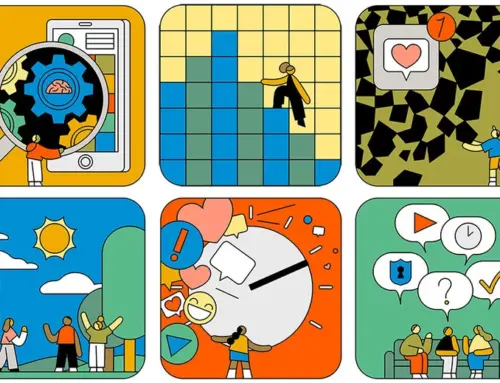People who really, really like food might say that they’ll eat anything. Still, that turn of phrase usually means anything that is actually food.
Sure, there are plenty of non-food items that look good enough to eat, like fancy soaps or candles. That being said, most of us know we should steer clear of things our body can’t digest.
However, there are people who suffer from a rare condition that gives them the urge to eat things that aren’t food. The National Eating Disorders Association explains that the condition is called pica, an eating disorder that involves swallowing items that don’t contain significant nutritional value.
Dr. James M. Greenblatt of Walden Behavioral Care Center in Massachusetts talked with LittleThings to break down the key facts surrounding this highly unusual condition.
People commonly affected by PICA:
Pregnant Women
It’s no secret that pregnant women often have strange cravings (for instance, suddenly wanting to eat pickles and peanut butter together).
However, pregnant women have been recorded as having cravings for non-food items since as early as antiquity, according to Dr. Greenblatt.
He explained: “Although the exact etiology has not been determined, iron deficiency is often the cause in pregnant women, and there is the thought that the body craves nutrients it is lacking.”
Young Children
Children are known to put almost anything in their mouths. This is not an unusual behavior, but if your child makes a long-term habit of this, it could suggest pica.
Dr. Greenblatt points out that 30% of pica cases worldwide involve small children.
He goes on to explain that the presence of an abnormal gut bacteria called dysbiosis is often connected to pica.
However, just because small children exhibit this behavior does not necessarily suggest that the problem will persist as they grow older.
“It is important to note the young child’s age — infants and toddlers begin to understand their surroundings by using their senses, which often includes taste,” Dr. Greenblatt says. “It is a normal practice for infants and young toddlers to put things in their mouths and ingest as a way of exploring the world around them.”
People with Certain Mental Health Conditions
Pica is often seen in tandem with other health conditions in adults.
Dr. Greenblatt points out that people with autism, schizophrenia, and obsessive-compulsive disorder will often experience pica.
“For those with pica and OCD, trichotillomania (hair pulling) and excoriation (skin picking) are common and the hair and skin is commonly ingested,” he says.
People Who are Malnourished
As you might imagine, pica has a tendency to affect people who have nutrient deficiencies.
“Malnutrition is the most consistent risk factor across all ages,” Dr. Greenblatt points out.
As a result, pica rates are much higher in developing countries where people frequently suffer from food scarcity.
Additionally, he says that pica cases have been recorded after people have had gastric bypass surgery. “Although gastric bypass surgery is an effective procedure for weight loss, the surgery results in malabsorption and malnutrition,” which can result in these non-food cravings, he says.
People Who are Developmentally Disabled
Pica can affect those with developmental disabilities in many of the same ways it does children.
A lack of a clear understanding of the world around them can cause certain people who don’t know better to ingest substances that shouldn’t be eaten.
Common Substances Consumed by People with Pica
Clay or Soil
Health-E News explains that clay eating has become somewhat widespread in South Africa among women who have iron deficiency.
In fact, it’s even been sold on the streets in bags specifically for consumption.
Nutritional deficiency on its own is a source of concern, but so are the other infections that ingesting dirt can cause.
According to the National Eating Disorders Foundation, people could ingest animal feces and harmful parasites along with it that could cause conditions like toxoplasmosis and toxocariasis.
Paint
When it comes to ingesting paint, lead poisoning is the immediate concern. Luckily, paint contains less harmful amounts of lead these days.
However, Poison Control outlines that even paint deemed safe to use indoors can have serious side effects when ingested.
Choking, skin irritation, upset stomach, nausea, and dizziness are just some of the complications someone who ingests paint can expect to experience.
Metal Objects
If someone suffering from pica has a taste for metallic objects, they are definitely doing themselves a lot more harm than good.
Not only can the object obstruct your stomach physically and cause harmful tearing, it can also cause serious metal poisoning that can be fatal, according to the National Eating Disorders Association.
Dr. Greenblatt also lists soap, hair, string, wool, chalk, rocks, and charcoal as items commonly ingested by those with pica.
How to Get Help
If someone you know or love is affected by pica, it’s important that they seek the right kind of help.
Dr. Greenblatt reiterates that “pica is a potentially serious psychiatric illness with underlying medical complications.”
Patients should be evaluated by their physician, who will be able to determine whether they are suffering from any deficiencies that could be contributing to their cravings.
From there, the doctor will be able to determine the best line of treatment and what kind of specialists the patients may require in the future.
We know finding eating disorder treatment can be tough. Walden is here for you. If you are concerned that you, or a loved one, may have an eating disorder, please reach out by completing the form on this page or email us at intake_coordinators@waldenbehavioralcare.com.





